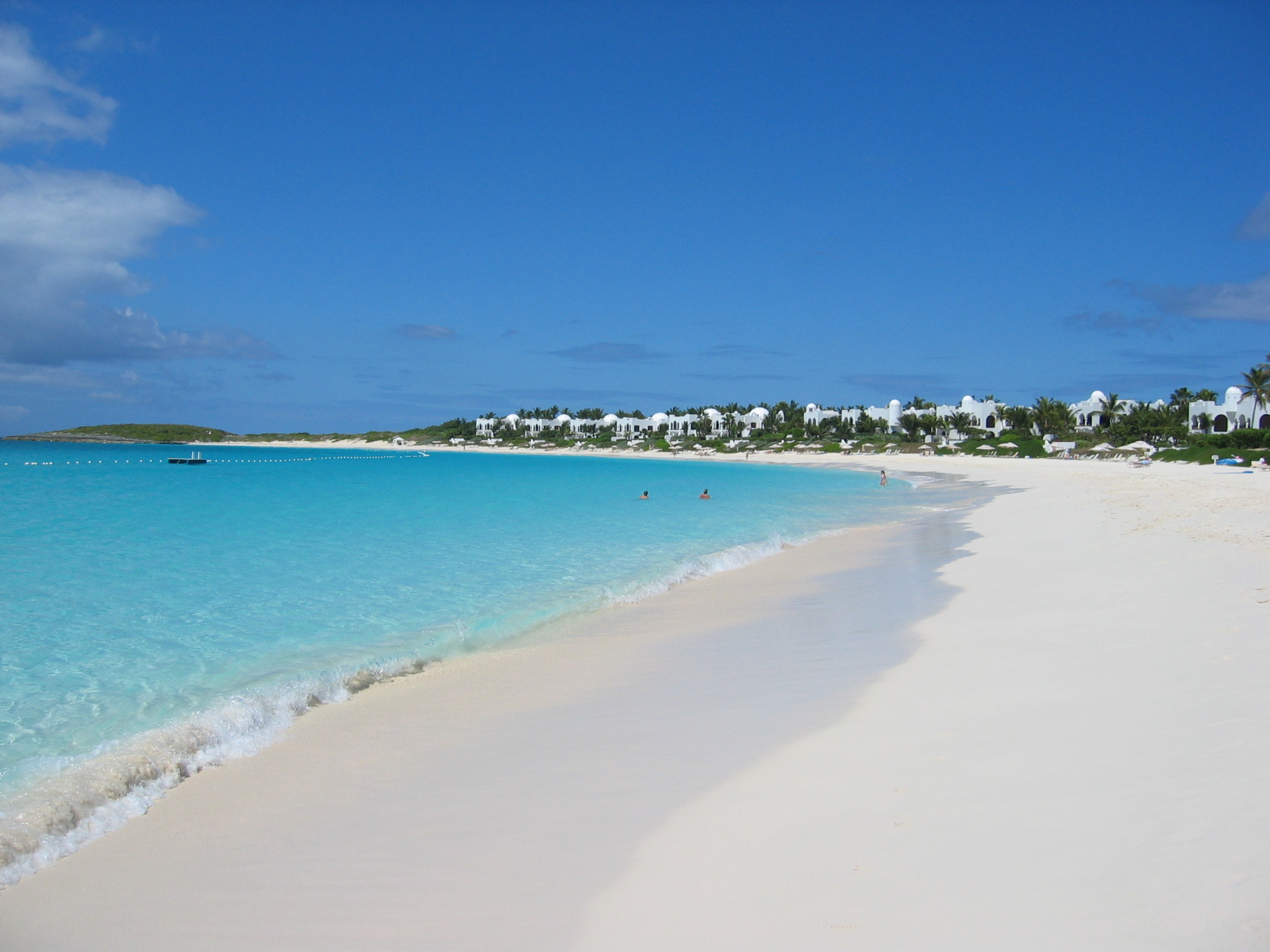pAnguilla is a British overseas territory in the Caribbean. It is one of the most northerly of the Leeward Islands in the Lesser Antilles, lying east of Puerto Rico and the Virgin Islands and directly north of Saint Martin. The territory consists of the main island of Anguilla itself, approximately 16 miles (26 km) long by 3 miles (5 km) wide at its widest point, together with a number of much smaller islands and cays with no permanent population. The island’s capital is The Valley. The total land area of the territory is 35 square miles (90 km), with a population of approximately 13,500 (2006 estimate).p
pAnguilla has become a popular tax haven, having no capital gains, estate, profit or other forms of direct taxation on either individuals or corporations. In April 2011, faced with a mounting deficit, it introduced a 3% “Interim Stabilisation Levy”, Anguilla’s first form of income tax.p
pThe name Anguilla derives from the word for “eel” in any of various Romance languages (modern Spanish: anguila; French: anguille; Italian: anguilla; Portuguese: enguia), probably chosen because of the island’s eel-like shape.p
pAnguilla was first settled by Amerindian tribes who migrated from South America. The earliest Amerindian artifacts found on Anguilla have been dated to around 1300 BC, and remains of settlements date from 600 AD. The date of European discovery is uncertain: some sources claim that Columbus sighted the island in 1493, while others state that the island was first discovered by the French in 1564 or 1565.p
pAnguilla was first colonised by English settlers from Saint Kitts, beginning in 1650. The French temporarily took over the island in 1666 but under the Treaty of Breda it was returned to English control. In this early colonial period Anguilla sometimes served as a place of refuge. A Major John Scott who visited in September 1667 wrote of leaving the island “in good condition” and noted that in July 1668 “200 or 300 people fled thither in time of war.” Other early arrivals included Europeans from Antigua and Barbados.p
pIt is likely that some of these early Europeans brought enslaved Africans with them. Historians confirm that African slaves lived in the region in the early 17th century. For example, Africans from Senegal lived in St. Christopher (today St. Kitts) in 1626. By 1672 a slave depot existed on the island of Nevis, serving the Leeward Islands. While the time of African arrival in Anguilla is difficult to place precisely, archival evidence indicates a substantial African presence (at least 100) on the island by 1683.p
pWhile traditional histories of the region assume that “the English” were the first settlers of Anguilla under British rule, recent scholarship focused on Anguilla offers a more nuanced view. It emphasizes the significance of early sociocultural diversity. This research suggests that St. Christopher, Barbados, Nevis and Antigua are all significant points of origin. Regarding African origins, West Africa as well as Central Africa are both posited as the ancestral homelands of some of Anguilla’s early African population.p






